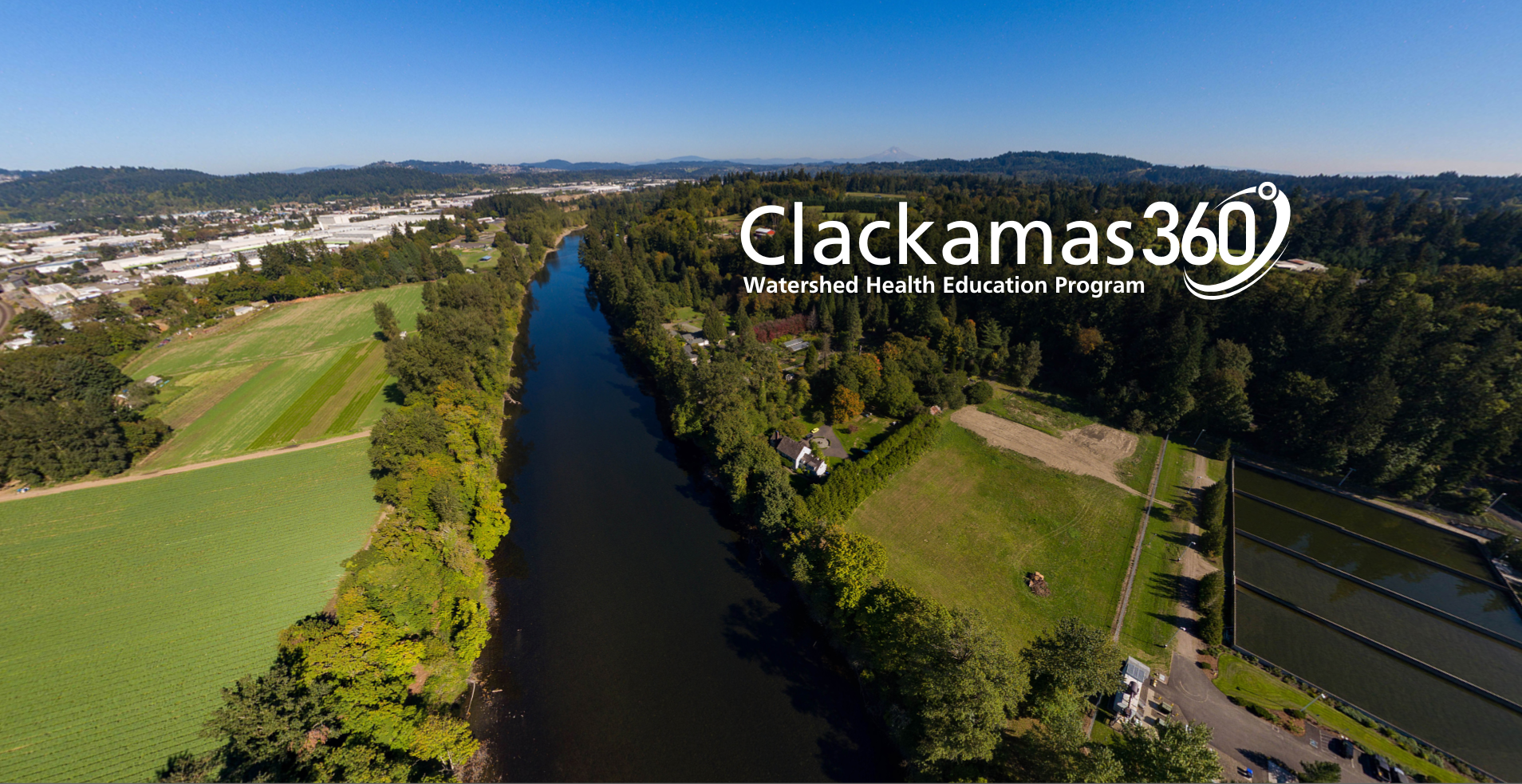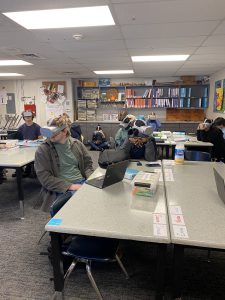
The Clackamas River Basin Council is excited to announce the Clackamas360 Virtual Watershed Tour – a custom watershed health education program now using virtual reality Oculus Go headsets in the classroom!
Local teachers interested in bringing a two-day watershed health experience to their classrooms please email or call us at 503-303-4372 or amy@clackamasriver.org.
About the Program

Clackamas360 is designed to be a self-guided educational tour for students or anyone curious about the watershed. CRBC contracted with 360Labs, a local virtual reality production company based in Portland to create this program. Using drone photography taken throughout the Clackamas watershed, CRBC and 360Labs created this 12 scene program which walks students through various watershed health topics, giving them full control over their experience as they make their way through the content.
This project is part of the Watershed Health Education Program, developed by Clackamas Water Environment Services (WES) to educate youth about the importance of protecting our watersheds. WES contracted the Lower Columbia Estuary Partnership (LCEP) to provide Watershed Health Education Support Service to elementary schools, middle schools, and high schools within surface water areas serviced by WES, and LCEP contracted CRBC to create these materials for high schools. Clackamas360 follows standards of the Oregon Environmental Literacy Program.
Information for Teachers
The Clackamas360 Watershed Health Education Program offer teachers a two-part experience for students; an in-person classroom experience and a field trip to a local restoration project for stewardship activities.
Clackamas360 Classroom Curriculum
The classroom experience consists of two activities; the Clackamas360 virtual tour and the EPA How’s My Waterway Activity.
- Clackamas360 Virtual Tour: Clackamas360 virtual tour uses Oculus Go headsets to bring students through the lower Clackamas basin using twelve 360-degree drone-captured scenes. Placed throughout these scenes are landmarks, educational graphics, and opportunities to think critically about the scene around them. Voiceover is included which will help guide students through the experience. Each scene in the Clackamas360 Virtual Watershed Tour has a watershed health topic and theme:
- Clackamette Park: Introduction to the Clackamas360
- Willamette Falls: Cultural perspectives
- Timber Forest: What is a watershed?
- Rock Creek: Urban watersheds are all around you
- Riverside Park: Resources from the Clackamas basin
- Eagle Creek Community Forest: Watershed function, “dynamic rivers,” and importance of riparian zones and large wood
- Eagle Creek Falls: Common riparian plants and animals
- North Fork Dam: Watershed stresses
- Carli Creek: Managing stresses with engineered systems
- Eagle Creek at Bonnie Lure State Park: Managing stresses through restoration
- High Rocks Park: What you can do to help
- Upper Clackamas River: Just for fun – two minute whitewater rafting video!
- EPA How’s My Waterway Activity – Using the EPA website, students will learn which watershed they are located within and the condition of their waterway. Students will take a deep dive into the health of a local watershed of their choice and investigate the various water quality indicator categories and their significance.
Objectives:- Reinforce what a watershed is
- Bring relevance and real-life perspectives to watershed health topics
- Understand how the impairment categories impact aquatic life and humans.
Clackamas360 Field Trip Curriculum
The Clackamas360 Field Trip curriculum is based on expanding and reinforcing what was learned about watershed health and water quality in the classroom presentation. The Clackamas River Basin Council is excited to offer the following field trip activities at Carli Creek in Clackamas, OR:
- Carli Creek Tour – Students will take a tour of the Water Environment Services’ Carli Creek Water Treatment Facility. They will learn how it functions, and why it was built recalling what they learned in the Clackamas360 tour.
Objectives:- Learn about natural wetlands and their importance
- Understand how impervious surfaces impact water quality
- Learn how humans use natural systems to treat storm water
- Water Quality Assessment at Carli Creek – Students will take a variety of water quality samples throughout the Carli Creek facility starting at the storm water entrance and ending at the outflow to the Clackamas River using water quality indicators they learned about in the classroom.
Objectives:- Observe and learn how the water treatment facility functions using a multiparameter water quality probe.
- Understand how the local industrial area impacts water quality with respect to the impairment categories discussed in the classroom.
- Test and measure the effectiveness of the natural filtration system at Carli Creek and learn the importance of the riparian zones.
- Tree Planting Stewardship Activity at Carli Creek East – the Clackamas River Basin Council is completing a Shade Our Streams restoration project at the site adjacent to the Carli Creek Water Treatment Facility. After our tour and water quality assessment at the facility, students are invited to help us plant trees and revegetate a site that was once degraded by blackberry bushes.
Objectives:- Reinforce the impact invasive weeds have on watershed health and function.
- Understand and appreciate the significance individuals can have through stewardship of our waterways.
- Reinforce the importance of biodiverse and native ecosystems in healthy habitats and waterways.
- Give back and contribute to a real life restoration project right on the Clackamas River.
To find out more please email or call Amy Barton at 503-303-4372 or amy@clackamasriver.org.